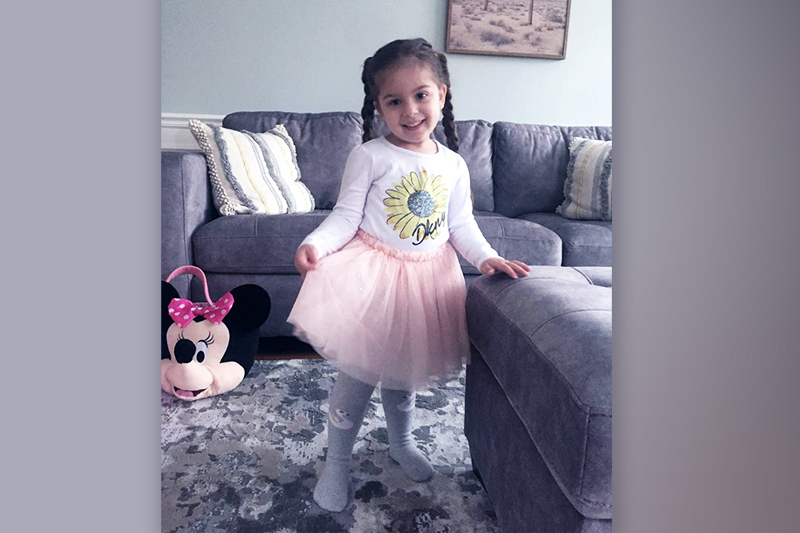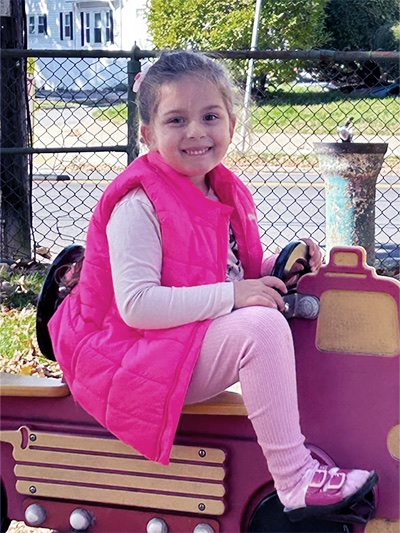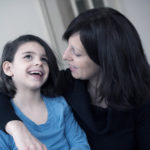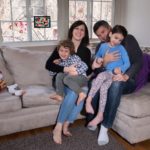Seeking a path forward for custom genetic treatments

In 2018, at age 7, Mila Makovec became the world’s first person to be treated with a drug made just for her. Languishing from Batten disease, a rare, fatal neurodegenerative disorder, she received an antisense oligonucleotide (ASO) drug designed to silence her genetic mutation, injected into the fluid around her spine through a lumbar puncture.
A team led by Timothy Yu, MD, PhD, in the Division of Genetics and Genomics and Manton Center for Orphan Disease Research at Boston Children’s Hospital, created the drug within the space of a year — a first in medicine. It was dubbed milasen.
Although Mila passed away in February 2021, her groundbreaking case was a spark. ASO drugs, which mirror patients’ genetic mutations and silence or counterbalance their effects, are relatively easy to synthesize. They have a common chemical backbone; only the custom genetic code (DNA or RNA) is inserted in plug-and-play fashion.
Could ASOs specific to patients’ mutations be a scalable solution for devastating, ultra-rare diseases? To help answer that question, Yu co-launched the international N=1 Collaborative in 2021 so that medical centers developing these treatments could share data and expertise. He has also been working with the Food and Drug Administration to develop regulatory standards, while exploring ASO treatments for other rare conditions.
A custom treatment for ataxia–telangiectasia
Several years ago, through newborn screening, an infant in California named Ipek was diagnosed with ataxia–telangiectasia (A-T), a rare disorder causing weakened immune function; dilated blood vessels in the eye, skin or mucous membranes; and progressive difficulty with balance, coordination, speech, and eye movements (ataxia).
“They told us that, in time, she would not be able to walk, she would not be able to read, she would have difficulty swallowing,” says Ipek’s father, Mehmet Kuzu. “They said there is nothing to do at this point.”

Through the nonprofit A-T Children’s Project, Kuzu saw one of Yu’s talks on milasen online, and learned that Yu was developing an ASO therapy for another neurodegenerative disease.
“The A-T Children’s Project identified three kids with Ipek’s kind of mutation,” says Kuzu. “We all sent skin samples to Dr. Yu’s lab, and they ran [the ASO treatment] on the cells. Luckily, Ipek’s cells responded.”
Ipek, then about 3, did not yet show signs of neurologic impairment — which typically starts at age 6 or 7 — so there was a potential window for preserving her motor function.
The FDA approved Yu to proceed with Ipek’s treatment. Now 6, Ipek has received multiple doses of the custom ASO atipeksen via lumbar puncture and continues to be treated at Boston Children’s four times a year. Her treatment team is cautiously optimistic that it’s helping, and is now treating a second child with atipeksen.
“We don’t expect this disease to stop, but if the disease slows down with no extra damage to Ipek’s condition, that is a success,” says Kuzu. “Or if this brings us closer to a solution for the future, that is also a success.”
A framework for individualized treatments
Treatments are currently available for fewer than 5 percent of patients with rare genetic disorders. In a paper published in Nature on July 12, Yu and colleagues offer a systematic approach to identifying which patients might benefit from customized ASOs — specifically, ASOs that alter gene splicing — as a first step in scaling up these treatments. They note that the majority of targetable genetic variants can be found only by sequencing the whole genome.
“Some types of mutations alter the normal instruction set,” says first author Jinkuk Kim, PhD, a former research fellow in Yu’s lab (and now on faculty at the Korea Advanced Institute of Science and Technology). “Other mutations don’t corrupt the actual instruction set, but change how the instructions are spliced together. If you can silence these mutations, the gene is there waiting to be reawakened.”
Using A-T as an example, the study analyzed whole-genome sequencing data from 235 people, and found that 15 percent had variants that were “probably” or “possibly” amenable to ASO treatment. Yu and his colleagues think the percentage could be similar for other rare, single-gene disorders.
This video from Harvard Medical School, describing an ASO Yu’s lab helped create for frontotemporal dementia, explains the different ways ASOs can work.
More to learn
ASOs have experienced some setbacks. Yu’s lab also developed valeriasen, a custom ASO for two toddlers with a severe, highly lethal form of epilepsy caused by mutations in the gene KCNT1. While both children had striking reductions in seizures, they also developed hydrocephalus, or fluid on the brain. Valeria, for whom the drug was named, passed away. (Yu’s team paused the trial but, with the FDA’s permission, plans to restart it soon.)
Yu is investigating whether a lower dose could avoid hydrocephalus. Hydrocephalus has also occurred with ASOs from other groups: tominersen for Huntington’s disease and nusinersen, the original ASO developed for spinal muscular atrophy. But because hydrocephalus can also be a part of neurologic disease, causation is hard to pin down.
“These cases highlight the importance of centers sharing their data so we can better understand the safety profile of these drugs,” says Yu.
Financial and ethical questions
Cost is another issue to be solved. The research to develop the Yu lab’s investigational ASOs like milasen and atipeksen cost an average of $1.6 million per program and required the support of charitable foundations. While similar to the prices of other genetically targeted therapies like Spinraza or Zolgensma, these costs raise concerns — at Boston Children’s and elsewhere — about scalability and the ethics of spending so much on treatments for very small numbers of patients.
Yu and his colleagues believe such efforts will ultimately advance biomedical research and hope that costs will come down as more is learned about ASOs and as safety testing becomes more efficient. They also hope to make the case that these treatments will save money in the long run when patients’ existing and projected lifetime health care costs are factored in.
“There’s still much to be learned, but we look forward to the day when treatments that are now very novel become more commonplace,” says Yu. “The ultimate goal is to make individualized medicine accessible, sustainable, and equitable.”
Learn more about the Division of Genetics and Genomics and the Manton Center for Orphan Disease Research at Boston Children’s Hospital.
Related Posts :
-

Made-to-order therapies get a boost with new FDA guidelines
Ed. note: Mila passed away in February, 2021, at age 10. The Mila’s Miracle Foundation continues to work to pave a ...
-

It takes a village: Creating best practices for personalized treatments
In 2019, doctors and scientists at Boston Children’s Hospital announced a medical landmark. In the space of one year, a ...
-

Shooting for the moon: From diagnosis to custom drug, in one year
Ed. note: Mila passed away in February 2021, at age 10. The Mila’s Miracle Foundation continues to work to pave a ...
-

Against all odds: Mila's unique mutation, and her own custom drug
Ed. note: Mila passed away in February 2021, at age 10. The Mila’s Miracle Foundation continues to work to pave a ...





